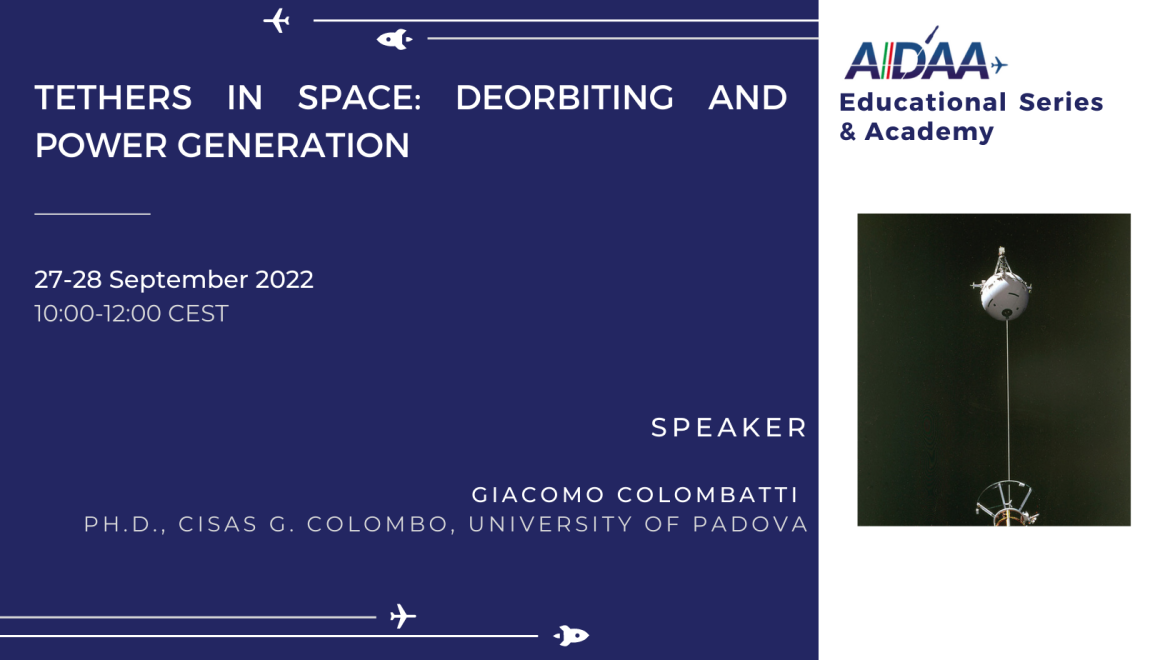
Tethers in Space: deorbiting and power generation
27/28 September 10-12 CEST
The Space Tether consists of a complex structure where there are three main parts: 1) the primary satellite; 2) a secondary
satellite; 3) a cable (of variable lengths) that is used to join the two spacecraft together. This cable allows the transfer of energy and momentum between the two spacecraft, and this transfer can be present in both directions and, in some cases,
can switch direction. Space tethers can be classified into two different areas: Passive tethers, which are used simply for mechanical connection and mainly transfer momentum from one part to the other; and Electrodynamic tethers, conductive wires or tapes or more complex structures), in which an electric current can flow and pass from one end to the other. The simplest application involves using the tether system as a de-orbit system; a drag Force is induced on the tether due to its relative motion with respect to the rotating plasma and the satellite.
An opposite application is the injection of electric current from one satellite which has an effect opposite to the deorbiting;
this effect can be used to increase the SMA of the system or produce movements in the orbital plane. The Electrodynamic tether is a system that can act as an orbital control for small and relatively big structures (depending on the tether length and on the produced current). Even if the tethers’ dynamics (passive or electrodynamic) are complex and not at all completely understood, the current knowledge in materials and technology is bridging the gap between theory and extensive application in current Space missions.
Participation
You need to buy one of the package list available here and use the Order ID assigned to you after purchase.
You need to Login for registration.

